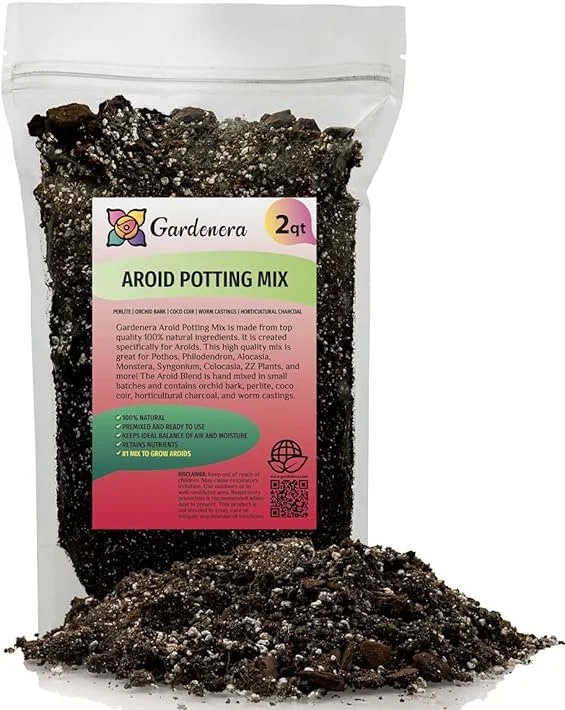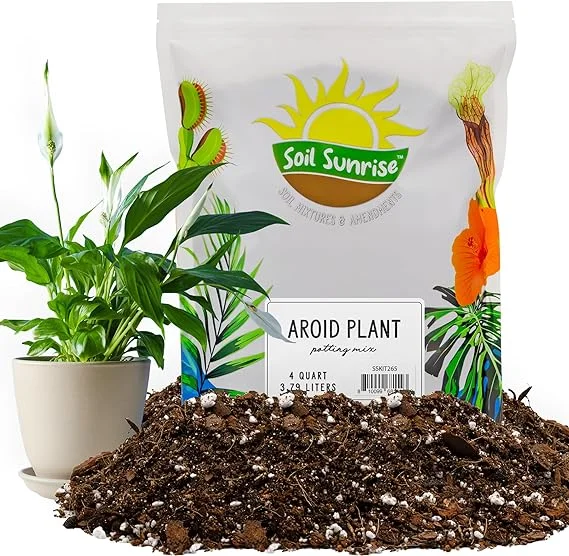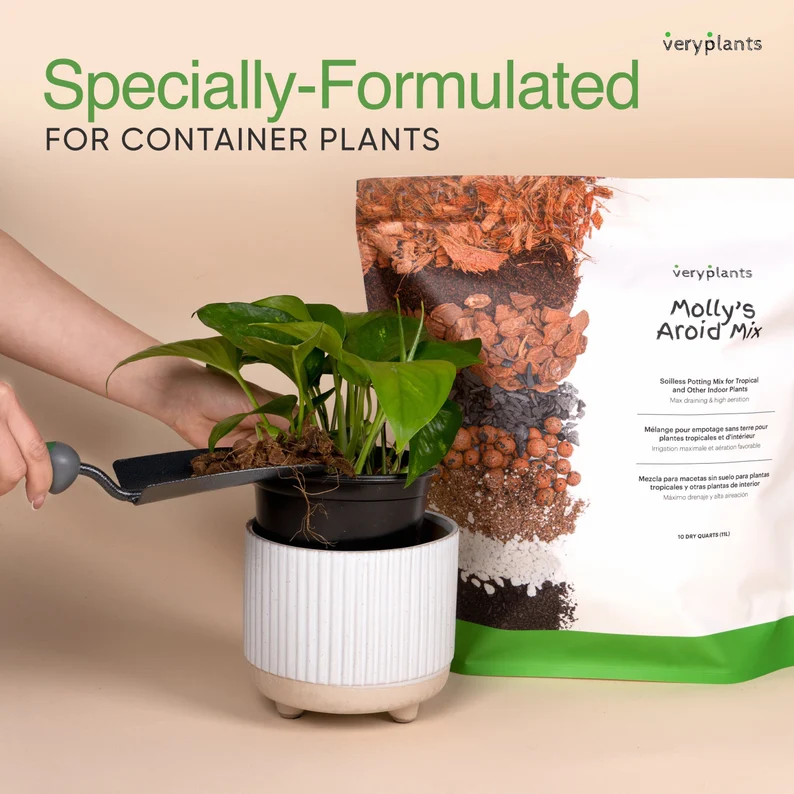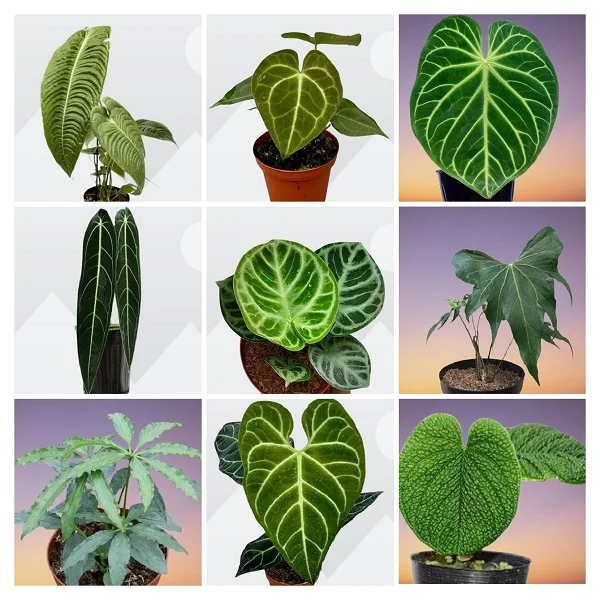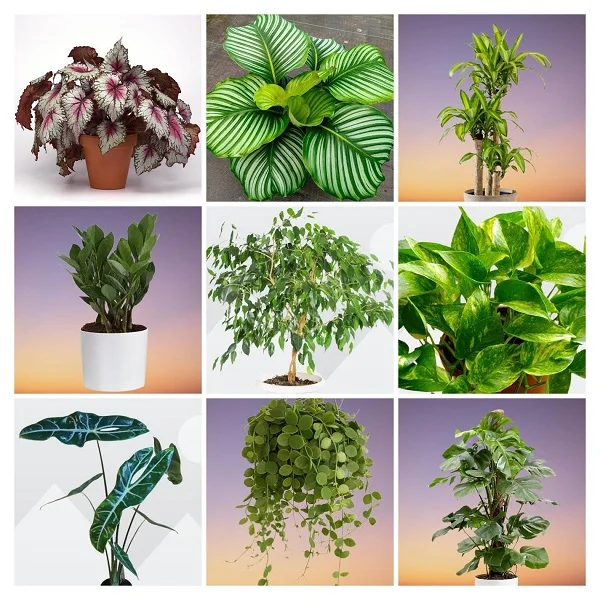How to Grow and Care for Anthurium luxurians Indoors
Some links in this post may be affiliate links
Anthurium luxurians grows best in bright indirect light, average warmth, highly humid conditions and consistently moist, rich, well-drained soil coupled with monthly feeding during the growing season.
Anthurium luxurians is one of the popular Anthurium varieties on account of its magnificent foliage and its ability to adapt to various growing conditions.
Anthurium luxurians is a foliage Anthurium plant species with large bullet-shaped, dark-green leaves which have a crinkled leaf surface and reflects light.
When the plant is in the juvenile stage, the foliage is light green and as it matures, it turns dark green to almost black.
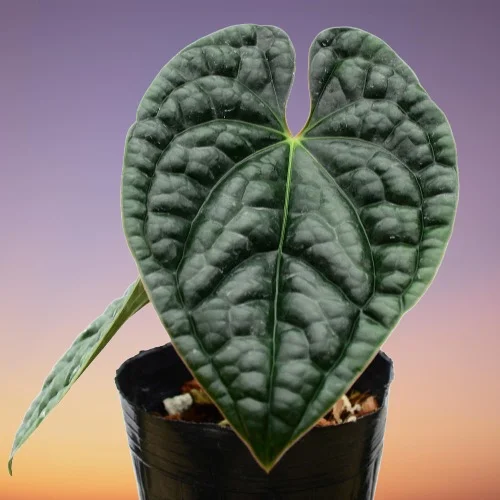
Botanical name: Anthurium luxurians
Family: Araceae
Origin
Anthurium luxurians is native to the tropical regions of South America in Columbia where it is found growing along the streams.
Size
The Anthurium luxurians grows to a height of 1-2 feet. The leaves are large and have a spread of about 2 feet. On account of its compact size and affinity for highly warm and humid conditions, Anthurium luxurians is among the best plants for a bathroom, kitchen, laundry area and other moist areas in the home.
Flower
The inflorescences on Anthurium luxurians are green spathes with a pale-green spandix though it is unlikely to flower under room conditions.
Toxicity
Anthurium luxurians like other Anthuriums is thought to be toxic to both humans and pets. It contain oxalate crystals which can cause digestive distress, breathing problems and skin irritation. Keep it away from children, cats, dogs and other pets to avoid any mishaps. Always wear gloves when handling this plant and wash your hands thereafter.
Where to Buy
Are you looking to add the magnificent Anthurium luxurians to your collection? You may obtain them online from Etsy (Link to Etsy).
How do you care for Anthurium luxurians indoors?
To care for Anthurium luxurians indoors, give it bright indirect light (dappled light), average warmth of 16-270C, high humidity of 60-70% and consistently moist, rich, well-drained soil coupled with monthly feeding during the growing season.
Anthurium luxurians care requires pruning to keep it neat and tidy as well as minimize pest and disease infestations. Repotting is only needed when it becomes pot-bound. Keep reading for more on these growing conditions and how to achieve them.
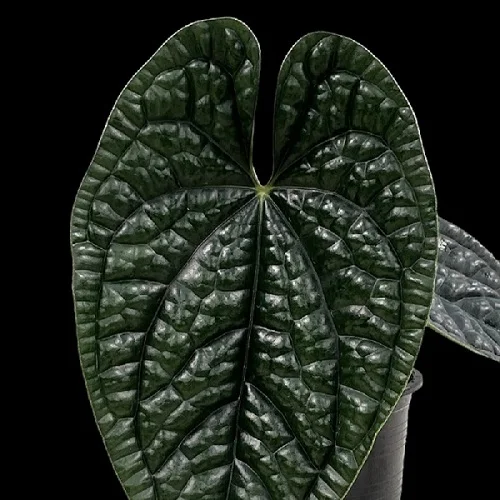
Watering
How often should I water Anthurium luxurians?
Water your Anthurium luxurians liberally in spring and summer and allow the top 1-2 inches of soil to dry out between waterings. Keep soil consistently moist but not soggy to avoid yellowing and rotting.
Reduce watering in fall and winter as growth is reduced at this time to maintain the soil slightly moist. Do not allow the soilball to dry out completely to prevent wilting and drooping leaves.
Use water that is at room temperature to avoid plant shock as it can cause slow growth. Ascertain that the water is chlorine-free as the plant is sensitive to chlorine and other chemicals dissolved in water. Avoid wetting the foliage as it can lead to fungal diseases.
Ensure that the pot has a drainage hole and the soil is well-draining to avoid getting soggy soil which can lead to root-rot and death of the plant.
Light Requirements
Where is the best place to put Anthurium luxurians?
Anthurium luxurians thrives in bright indirect light; a curtain-filtered sunny window is ideal for this plant. Keep it away from direct sunshine as it can scorch the leaves.
Too little light may result in yellowing and leggy growth. Therefore, where the natural lighting is insufficient, instal a full spectrum grow light to supplement it.
Rotate the pot regularly to ensure that the plant receives light on all sides for a balanced growth.
Temperature & Humidity
Anthurium luxurians flourishes in an average warmth of 16-270C. Keep it away from drafts to avoid sudden changes in temperature which can lead to reduced growth.
Anthurium luxurians prefers a high humidity of 60-70%. To increase humidity, set the pot on a wet pebble tray or use a humidifier. You may also grow the plant in a well-lit bathroom, kitchen or laundry area where the conditions are consistently moist. Maintain good air flow to prevent fungal diseases.
Potting Soil
What is the soil mix for Anthurium luxurians?
The best soil mix for Anthurium luxurians is a rich, free-draining soil that does not get waterlogged while providing the required nutrients. Most potting mixes designed for aroids are ideal for this plant.
Fertilizer
What is the best fertilizer for Anthurium luxurians?
Feed your Anthurium luxurians with a balanced, liquid fertilizer every 3-4 weeks in spring and summer. Withhold feeding in fall and winter as growth is minimal and feeding at this time can lead to fertilizer burn.
Occasionally flush out accumulated salts from the soil by running a stream of water through the soil until the water comes out through the drainage hole. Allow it to run for a few minutes and repeat the process several times.
Repotting
Repot Anthurium luxurians every 2 years at the beginning of the growing season (spring to early summer). Use a pot one-size larger and well-draining soil that is rich in organic matter.
Use a pot that has a drainage hole to avoid getting soggy soil as it can lead to root-rot and death of the plant. Check out these ceramic planters with drainage hole and saucer on Amazon.
Pruning & Grooming
Pruning Anthurium luxurians is easy. Remove yellow and dead leaves to maintain the plant neat and tidy and also discourage pest and disease infestations.
Cut the leaves at the base of the stem with a sharp sterlized knife or a clean pair of scissors to avoid unnecessary injuries which can lead to disease infestations.
Clean the leaves regularly by damp-wiping with a soft cloth to get rid of dust. Do not leave water drops on the leaves as it may cause fungal infestations like leaf spot and powdery mildew.
Anthurium luxurians Propagation
Anthurium luxurians propagation is done from splits by plant division during the growing season when the plant is actively growing to hasten establishment. Below is an outline on Anthurium luxurians propagation by plant division.
Propagating Anthurium luxurians by plant division
- Thoroughly water the plant at least one day before to make it easier to divide and also hasten establishment.
- Remove the plant from its pot and carefully divide it into sections by pulling apart the roots. Ensure each section has adequate roots to hasten establishment.
- Select a 6 or 8 inches pot and ensure that the pot has a drainage hole to prevent the soil from getting soggy to avoid rotting.
- Fill the pot with well-draining potting mix and make a hole in the center of the pot. Ensure that the hole is slightly wider than the root base of the section.
- Place the section in the previously made hole and lightly firm the soil around the base while taking care not to bury it too deep; maintain the section at the same soil level it was in the previous pot.
- Wet the soil thoroughly and place the set up in a well-lit, warm place until the new plant is well established after which you can begin routine care.
Related Content: How to Propagate Anthurium Plants in 5 Easy Ways.
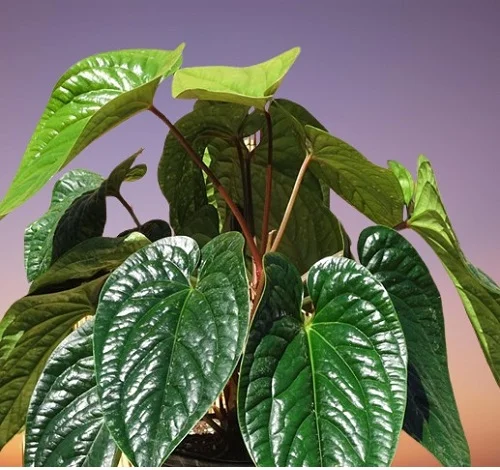
Anthurium luxurians Problems & Remedies
Anthurium luxurians problems are brown leaves, yellow leaves, drooping leaves, brown leaf tips, brown leaf spots, pests, and diseases among others. Keep reading for more on these problems and how to solve them.
Brown leaves
The main causes of Anthurium brown leaves are incorrect watering, too little light, improper feeding, poor quality soil, being root-bound, pests, diseases, hot temperatures, age among others.
Yellow leaves
Some of the causes of yellow leaves on Anthurium luxurians include inconsistent watering, soggy soil, drafts, and too little light.
How to fix it
Inconsistent watering: Water when the top 1-2 inches of soil dry. Do not water on a schedule.
Soggy soil: Use a pot that has a drainage hole and soil that is free-draining.
Drafts: Protect or keep the plant away from drafts coming from windy doors and windows, AC units, stoves, hot air vents among other.
Too little light: Move the plant to a brighter spot or use a grow light if the natural light is not enough.
Drooping leaves
Drooping leaves on Anthurium luxurians are caused by low humidity, incorrect watering, drafts, direct sunlight, and pests infestations.
How to fix it
Low humidity: To increase humidity, set the pot on a wet pebble tray or use a humidifier. You may also grow the plant a well-lit bathroom, kitchen, or laundry area.
Incorrect watering: Do not water on a schedule. Water when the top 1-2 inches of soil feel dry. Never allow the soil to dry out completely.
Drafts: Keep the plant away from drafts emanating from AC units, stoves, hot air vents, windy doors, drafty windows and others.
Direct sunlight: Protect the plant from direct sunlight by filtering the light with a sheer curtain.
Pests infestations: Regularly inspect the plant for pests and take timely control measures.
Brown leaf tips
Brown leaf tips on Anthurium luxurians are caused by dry air, underwatering and soggy soil.
How to fix it
Dry air: Set the pot on a wet pebble tray, use a humidifier to raise humidity or grow the plant in a well-lit bathroom or in a closed terrarium.
Underwatering: Water when the top 1-2 inches of soil dry. Do not allow the soil to dry out completely.
Soggy soil: Ensure that the pot has a drainage hole and that the soil drains easily.
Brown leaf spots
Brown leaf spots on Anthurium luxurians are sunburn marks caused by exposure to direct sunlight. Move it to a shaded place or use a light curtain to filter the light.
Pests
Common pests on Anthurium luxurians are spider mites, aphids and fungus gnats.
How to fix it
- Check underneath the leaves regularly for these pests and take timely control measures.
- Isolate the affected plant to prevent spread to other plants.
- Treat the infested plant with neem oil or insecticidal soap as per the manufacturer's instructions.
- Damp-wipe the leaves regularly with a soft cloth to discourage the pests.
- Maintain the plant well pruned to minimize the hiding and breeding places for these pests.
Diseases
Anthurium luxurians is prone to root-rot disease which is promoted by soggy soil. It is characterized by yellowing and wilting of the leaves which is rapidly followed by browning and plant collapse.
How to fix it
- Carefully slip the plant out of its pot and inspect the roots.
- Trim brown-black, mushy roots and treat the healthy roots with a copper-based fungicidal solution as recommended by the manufacturer.
- Disinfect the pot with the fungicidal solution or use a fresh pot to repot the plant in fresh, well-draining soil.
- Do not water the plant immediately and keep it dry for 5-7 days before you can resume watering.
- Use a pot with a drainage hole and well-draining soil to prevent the soil from soggy.
- Cut down on watering in fall and winter as growth is minimal at this time; keep the soil slightly moist.
Related Content: 8 Common Anthurium Problems and How to Fix Them
You liked it? Share on social media.
Related Content
Amazon Associates Disclosure
Homeplantsguide.com is a participant in the Amazon Services LLC Associates Program, an affiliate advertising program designed to provide a means for sites to earn advertising fees by advertising and linking to amazon.com.
